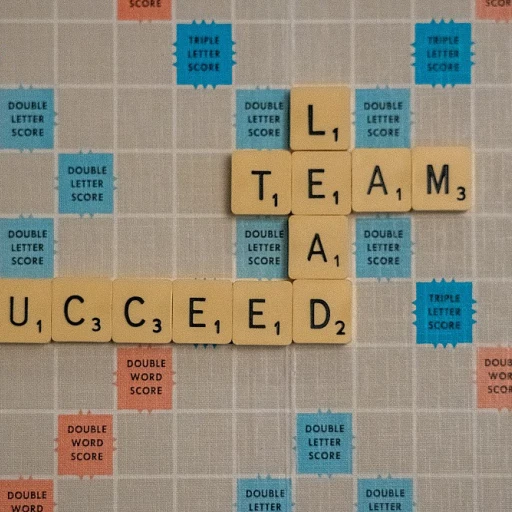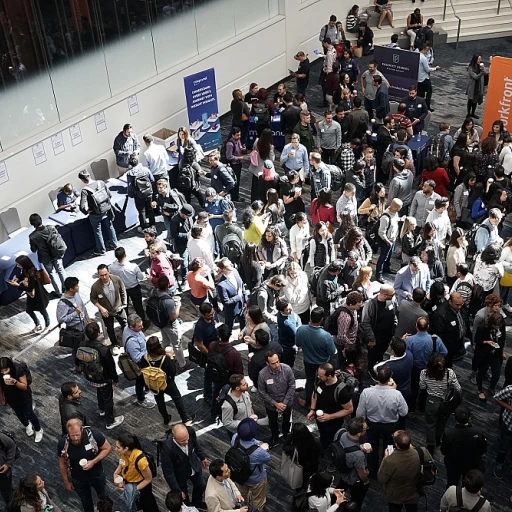
The Modern Hiring Experience
Adapting to a New Era of Recruitment
The hiring landscape has undergone a seismic shift in recent years. With the rapid advancement of technology and changing workforce dynamics, businesses must navigate an increasingly complex hiring environment. The modern hiring experience demands agility and innovation from employers to attract top talent. In this new era, the recruitment process is not just about filling positions; it is about finding the right fit for both the company and the candidate. Today's job seekers have access to more information than ever before, and they expect a seamless, transparent, and engaging hiring process. To thrive in this competitive environment, companies must adapt and rethink their recruitment strategies. By streamlining the hiring process, businesses can reduce time-to-hire and minimize the potential for candidate drop-off, which we delve into further in the article. Moreover, crafting effective job descriptions is crucial in attracting suitable candidates right from the start, highlighting the importance of clear and compelling communication. The integration of social media into recruitment strategies is another essential facet of modern hiring, providing diverse channels to reach potential employees. Additionally, improving the interview process is critical for leaving a lasting impression on candidates and ensuring a thorough evaluation of their skills and fit. Lastly, a positive company culture is increasingly becoming a decisive factor for job seekers when choosing their future workplace. Employers must be proactive in building and promoting a healthy work environment to retain and attract talent. Together, these elements form a comprehensive approach to modern hiring, setting the foundation for successful recruitment in today's fast-paced world.Streamlining the Hiring Process
Enhancing Efficiency in Recruitment
A streamlined hiring process is not just a time-saver—it’s a strategic advantage that can significantly impact a company’s ability to attract top-tier talent. The modern job market is competitive, and candidates appreciate a smooth and transparent application process. Here are a few ways to effectively simplify each step of recruitment. Firstly, clarity and organisation in the initial stages reduce unnecessary delays. Automating administrative tasks such as scheduling interviews or following up with candidates allows your recruitment team to focus on more critical aspects, like evaluating candidate fit and cultural alignment. Consider leveraging advanced Applicant Tracking Systems (ATS) to maintain consistent communication and keep track of applicants more efficiently. An ATS can automate reminders and sort candidate information effortlessly, streamlining the entire workflow. Furthermore, aligning internal stakeholders in each hiring phase can prevent bottlenecks. It's crucial for decision-makers and team members to be on the same page regarding the role's requirements and expectations, which can be achieved through preparatory meetings and clear documentation. This ensures a unified front during interviews and assessments, aligning more closely with your crafted job descriptions (which are discussed more in the subsequent section). Additionally, make the candidate journey as clear as possible. Transparency in the recruitment timeline, response etiquette, and feedback mechanisms can greatly enhance applicant satisfaction and, consequently, the company’s reputation. Often overlooked, an efficient reference check process can save significant time. Developing a consistent format and set of questions for references can expedite this final step. While these strategies streamline the hiring process, their implementation should always consider company culture and values. This foundational aspect ties back into not only recruiting the right talent but also reinforcing a positive company culture that encourages retention and morale among employees.Crafting Effective Job Descriptions
Elevating the Role of Job Descriptions in Recruitment
The journey to a seamless hiring process often starts with a thoughtfully crafted job description. As organizations embrace modernization, it's crucial that job descriptions not only reflect the role accurately but also align with the broader recruitment strategy. An insightful and detailed job description can serve as a beacon, attracting the right talent from the get-go. In today's competitive market, job descriptions must go beyond the traditional format. They should articulate not only the responsibilities and requirements of the role but also offer a glimpse into the company's ethos and work environment. This approach helps to filter candidates who resonate with the company culture, streamlining the screening process effectively. To further enhance the clarity and appeal of job descriptions, leveraging best practices in hiring is indispensable. Employers should focus on clear language, a compelling opening, and vivid descriptions that capture what makes the position unique and what candidates can expect. As we delve into leveraging social media for recruitment in our journey of recruitment transformation, remember that the foundation laid with precise job descriptions significantly impacts your outreach success across these platforms. Engaging potential candidates with an accurate portrayal of opportunities primes them for an optimal interview process, discussed further in upcoming segments of this series. Embracing a holistic approach, where each stage of hiring complements the other, is key to achieving a streamlined and effective recruitment process.Leveraging Social Media for Recruitment
Harnessing the Power of Social Media for Talent Acquisition
In today's digital age, social media has become an indispensable tool for recruitment. It's not just about posting job openings; it's about engaging with potential candidates and showcasing your company culture. Platforms like LinkedIn, Facebook, and Twitter offer unique opportunities to reach a diverse audience, allowing you to connect with both active and passive job seekers.
To effectively leverage social media, it's essential to maintain a consistent and authentic presence. Share content that highlights your company's values, achievements, and day-to-day activities. This not only attracts potential candidates but also gives them a glimpse into what working with your organization might be like, complementing the insights shared in our discussion on building a positive company culture.
Moreover, social media can be a powerful tool for networking. Encourage your employees to share job openings within their networks, expanding your reach and potentially finding candidates who might not have been actively searching for new opportunities. Remember, the key is to create engaging and informative content that resonates with your target audience, making them eager to learn more about your organization.





